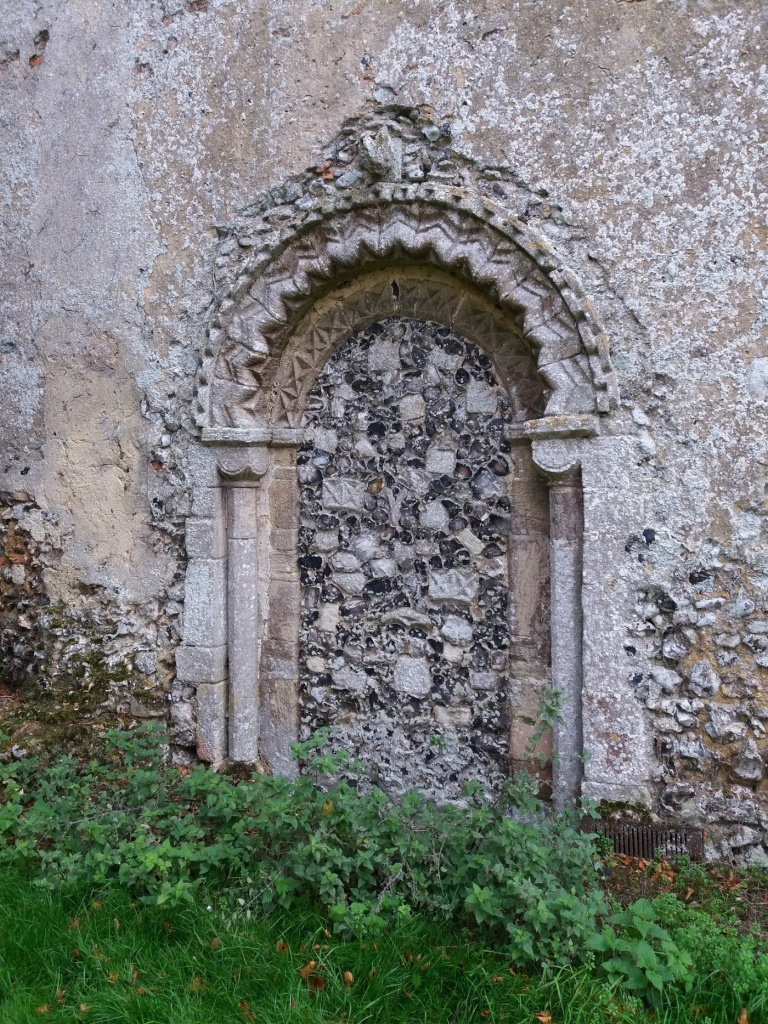Many medieval churches have blocked up doors, and those in the north wall are often known as Devil’s doors. The common explanation is that in more superstitious times the north door would have been left open during the ceremony of baptism so that the Devil, when he left the child after its original sin was cleansed, could escape from the church.[1]
Most seem to have been blocked up during the 16th century. The conventional wisdom is that it was done to discourage superstitious belief in the Devil fleeing from the infant’s body, but it is at least as likely that the extra wall space thus created could have been used to install additional pews.[1]
The historian Nicholas Groves has suggested that the appellation of Devil’s door stems from an “unintelligent post-Reformation antiquarianism resulting from a lack of knowledge of mediæval liturgy”.[1]
Sarum Use
There was no universal form of worship in the Medieval Church, so different countries and regions developed their own rites. In England the Sarum Use, formalised at Salisbury Cathedral,[a]Sarum is an old name for Salisbury. found widespread acceptance particularly among parish churches.[2]
Baptism
The first part of the baptism service took place in the porch of the church, or outside the doorway if the church had no porch. It began with the priest breathing on the baby, followed by an exorcism, at the end of which the baby received the sign of the cross on its right hand. Only then did the baby and the congregation enter the church.[3] Thus although the formal renunciation of the Devil took place at the baptismal font, Satan had actually been exorcised before the infant entered the church, so there was no need for any escape route.[1]
Procession
Processions through and around the church were a common feature of the Sarum Use.[2] On Palm Sunday, for instance, the entire congregation would re-enact Christ’s entry into Jerusalem by processing out the north door in a clockwise direction and re-entering via the south door.[1] But the publication of the Book of Common Prayer in 1549, following the establishment of the Church of England, put an end to such processions and established a new form of church services.[2] The north door thus became surplus to requirements, and may simply have been blocked up to prevent draughts.[1]
Notes
| a | Sarum is an old name for Salisbury. |
|---|

